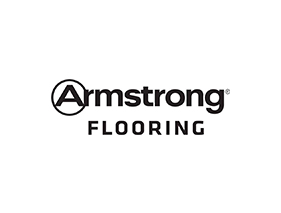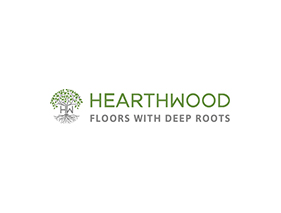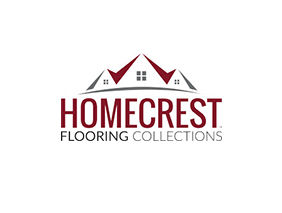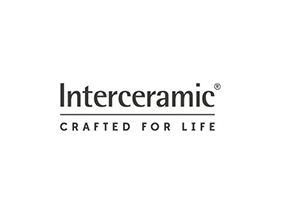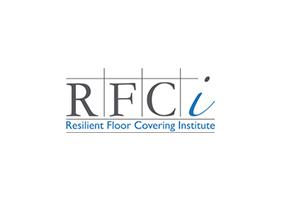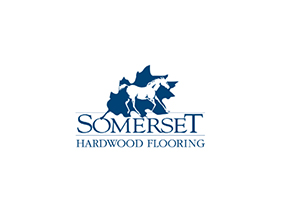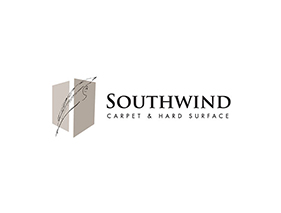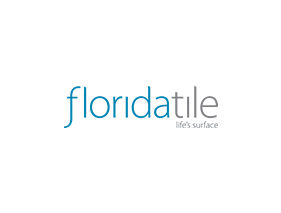Engineered & Solid Wood Flooring
Advances in wood flooring during the past few years mean that you now can have wood flooring anywhere in your home or business. Where you want to put it, however, will determine the type of wood flooring you can use.
There are two types of wood floors available on the market today: Solid and Engineered.
Solid wood flooring is exactly what the name implies: a solid piece of wood from top to bottom. The thickness of solid wood flooring can vary, but generally ranges from ¾” to 5/16”. One of the many benefits of solid wood flooring is that it can be sanded and refinished many times. Solid wood flooring can be installed above or on grade.
Engineered wood floors are real wood floors that are manufactured using three to nine layers of different wood veneers. The sub layers can be of the same species, or of different species. The grain of each layer runs in different directions, which makes it very stable. This means that the wood will expand and contract less than solid wood flooring during fluctuations in humidity and temperature. The top layer of engineered wood flooring consists of high-quality wood. While this type of flooring can be sanded and finished, it cannot be done as many times as solid wood flooring. Engineered wood flooring can be installed above, on or below grade.
Laminate
Since the lamination process simply is the fusing together of two or more types of materials, and sealing them, the world of laminate flooring is full of choices. Wood, stone and tile are some of the most popular uses for lamination. Any type of grain and color of wood or layout of stone or tile can be captured, laminated and split into easily-assembled planks from which you can create a floor. The sky is the limit, sometimes making it difficult for consumers to settle on one choice.
Here’s one way to think about laminates—to divide them into different types and to try and settle on which type of laminate floor will work best for your project.
Installation Types
You can divide laminate into installation categories and you might want to select your laminate this way, ensuring you pick a floor with the kind of installation you prefer:
- Glueless-Click. Over two-thirds of today’s laminates fall under this easy-to-install, glueless click-lock category.
- Laminate Flooring with Underpad Attached – Note: some laminate floors come with a pre-attached underpad, making installation even quicker and easier. Laminate floors without a pre-attached underpad often require that an underpad be laid down prior to installation of the laminate floor to provide a level of cushion and sound absorption. Additionally, if the laminate floor is being installed on or below grade, or in an area subject to moisture, a separate thin plastic underlayment will need to be laid down prior to installation of the laminate floor to provide a moisture barrier (aka vapor barrier). This needs to be done whether the laminate floor has a pre-attached underpad or not.
- Glued Laminate. You’ll need to glue the joints together. While this makes for a very strong floor once installed, installation cost and time is higher than with glueless-click.
- Pre-Glued. Here, the joints have a glue already applied to them, but may need to be moistened to activate the glue before you join them together.
Surface Types
You might want to pick your floor simply based on what the surface will look like. As we’ve said before, laminates are always evolving. Where there once was one basic surface to choose from, now there are many.
- Smooth. A plain finish just like a layer of varnish you’d associate with hardwood. Sometimes you can choose between high, medium and low gloss finishes.
- Embossed and/or Textured. Some laminates come with a textured finish. Regular embossing isn’t an exact match up with the grooves of the printed grain but does fool the eye into seeing a surface grain.
- Distressed/Hand scraped. Hand scraped laminate flooring is now available—a process that up until recently was reserved only for engineered or solid hardwood floors. This process adds an antiqued look to your laminate floor.
- Keep an eye out for new laminate innovations, they’re happening all the time.
Tile
Tile is durable, moisture resistant, and long-lasting. It’s a great way to give a unique touch to any room. We have a large selection for you to choose from and the experience and knowledge to expertly install tile in your home. Tile is great for floors, custom backsplashes, and showers. Below you will find an introductory guide to the different types of tiles, suppliers we work with, and more.
Through Body Porcelain Tile
 Through Body Porcelain tiles are extremely hard and impermeable, which makes the tiles highly resistant to moisture, staining and wear. In producing this type of porcelain tile, a color pigment is mixed with the clay body powder, giving the finished tile a consistent color throughout the body of the tile. This type of tile withstands temperature extremes, and may be used in exterior applications, including pool linings.
Through Body Porcelain tiles are extremely hard and impermeable, which makes the tiles highly resistant to moisture, staining and wear. In producing this type of porcelain tile, a color pigment is mixed with the clay body powder, giving the finished tile a consistent color throughout the body of the tile. This type of tile withstands temperature extremes, and may be used in exterior applications, including pool linings.
Glazed Porcelain Tile
 Glazed Porcelain Tiles are extremely hard and impermeable, which makes the tiles highly resistant to moisture, staining and wear. In producing this type of porcelain tile, a colored glaze is added to the surface of the tile, enhancing the visual presentation. This type of tile withstands temperature extremes, and may be used in specific exterior applications, including pool linings.
Glazed Porcelain Tiles are extremely hard and impermeable, which makes the tiles highly resistant to moisture, staining and wear. In producing this type of porcelain tile, a colored glaze is added to the surface of the tile, enhancing the visual presentation. This type of tile withstands temperature extremes, and may be used in specific exterior applications, including pool linings.
Glazed Ceramic Tile
 Glazed Ceramic Tiles have the same glaze on top of the body of the tile that is applied to a porcelain body tile. The body of the tiles can be colored (any color shade from yellow to reddish brown) or else they can be whiteish (sometimes white) depending on the raw materials used. In glazed tiles, the color of the body is relatively unimportant. The main difference between a Ceramic Tile and a Porcelain Tile is the body under the glaze. The Ceramic Tile body is more porous than a Porcelain Tile body. Glazed Ceramic Tiles are an excellent choice for All interior applications.
Glazed Ceramic Tiles have the same glaze on top of the body of the tile that is applied to a porcelain body tile. The body of the tiles can be colored (any color shade from yellow to reddish brown) or else they can be whiteish (sometimes white) depending on the raw materials used. In glazed tiles, the color of the body is relatively unimportant. The main difference between a Ceramic Tile and a Porcelain Tile is the body under the glaze. The Ceramic Tile body is more porous than a Porcelain Tile body. Glazed Ceramic Tiles are an excellent choice for All interior applications.
Mosaic Tile
 Mosaic tiles are small tiles, generally 2″ x 2″ or smaller, and always less than six square inches in area. Mosaic tiles may be made from either a porcelain body or a clay body. Mosaic tiles may also be made with other materials, including Glass, Metal and Natural Stone.
Mosaic tiles are small tiles, generally 2″ x 2″ or smaller, and always less than six square inches in area. Mosaic tiles may be made from either a porcelain body or a clay body. Mosaic tiles may also be made with other materials, including Glass, Metal and Natural Stone.
Mosaic tiles are most often mounted on paper, mesh or dot-mounted sheets to facilitate easier handling and installation. Mosaic tiles are commonly used to create a design with other types of tile including porcelain, ceramic, or even natural stone.
Quarry Tile
 Quarry tile is an unglazed tile manufactured from natural clays and shale. It has a thick, dense body with a high-resistance to moisture and staining. Like Through Body porcelain tile, quarry tile has a consistent color throughout the body of the tile.
Quarry tile is an unglazed tile manufactured from natural clays and shale. It has a thick, dense body with a high-resistance to moisture and staining. Like Through Body porcelain tile, quarry tile has a consistent color throughout the body of the tile.
The surface texture of the quarry tile provides a natural slip resistance, and abrasives can be added to further enhance the slip resistance qualities of the tile. For this reason it is commonly used in commercial applications.
Tile Installation
After you’ve selected the perfect tile, your next step is to get it installed. We provide full-service, high-quality tile installation. Whether it’s a large job or small, you can count on us for quality, long-lasting work!
Step 1: Prepare the Surface. Make sure your surfaces are clean, smooth, and dry for best results. …
Step 2: Begin Your Layout. For an efficient layout, start by marking the center point of each of the walls in the room. …
Step 3: Apply the Adhesive. …
Step 4: Cut Tile as Needed. …
Step 5: Set Your Tile. …
Step 6: Grouting Joints
How Different Types of Tile are Made
Ceramic and Porcelain tile are both made from Clay. However, porcelain tends to be made from denser clay and is baked at higher temperatures for longer periods of time, resulting in a much harder and denser tile than ceramic.
Counter Tops
Kitchens and bathrooms are perhaps the most used parts of the house. It feels good when you see these two rooms perfectly designed and styled. The way to do this is to find the perfect countertop for your kitchen and the perfect vanity for your bathroom.
A kitchen’s countertop can be the most important point of the room in your house. This is where you cook your foods and even used for socializing. In fact, the kitchen countertop is the heart of the house. So it is important that the countertops of your kitchen are useful and long-lasting. There are different types of countertop to choose from, depending on the ambience of the home and the motif of the design of the whole house.
Granite
One of the toughest usual equipment that you can use in your kitchen countertop is granite. Granite is becoming a progressively more well-liked choice as a kitchen countertop because of its hardness. Granite is commonly solid for scratches. Granite resists heat. Hot pots can’t ruin your countertops. There are also several colors to choose from like ruby red, jet black and verdant green. This stone has a pattern of stripes speckles or splotches.
Quartzite
Quartzite is also a natural substance made of stone that is well known as a kitchen countertop. This material is very thick and hard. Like granite, heat from pots can’t damage your Quartzite countertop. It doesn’t require high maintenance.
Concrete
Concrete would create an attractive textile as a kitchen countertop and this make is very affordable. It is a well known material that designers recommend to homeowners. Concrete countertop service providers offer their own exclusive colors. Cement will be different in brands of pigments, stains, and aggregate colors, so concrete countertops will always be unique.
Laminate
Laminate countertop is also the best choice if you want big selection of colors and patterns. It is the most affordable countertop. Laminate countertop has 250 colors and can be installed with flawless cove backsplashes that will keep the liquid to spill from the cabinets. And it’s easy to clean. You only need water and soap to clean your laminate countertop.
Solid Surface
Solid surface offer a mass of benefits in performance with unbelievable application and design flexibility. There are variety of colors and texture to choose from. It is also stain resistant and provides a low maintenance option for your kitchen.
Wood
Wood countertops or butcher block tops are perfect in beauty and function. This counter is usually made from hard rock maple or oak that gives pleasant glow to any kitchen. It also adds natural affection to the kitchen space.
Paper
Paper Countertops are very appealing and ecological. This is available in multiple colors, sizes and thicknesses and design. These materials are resistant to stain, scratch, heat and are easy to clean.
Stainless Steel
Stainless steel countertop is the classic type of countertop and by no means goes out of styles. Stainless steel never stains or corrodes. It is very tough, resistant to heat and water-proof.
Glass
Glass countertops give a kitchen a modern look. It has a heavy tensile power that tolerates a heavy weight . This countertop is not scratch resistant. It is recommended not to be used as cutting boards. This kind of countertop requires a challenging maintenance; if not dried with towel, this will leave watermarks and finger prints. It is recommended to use glass cleaner to maintain the striking look of the countertop.
Carpet
Carpet is a great way to add comfort to any room. Not only does it look amazing, but it makes for a quieter and more energy-efficient room as carpet has great insulating qualities. We have an amazing selection of carpet in a wide range of types, colors, and styles. We work with the best suppliers and can help you color match the perfect carpet to create a room you will love for years to come.
Types of Carpet
Loop Pile
 When you see carpet where the fibers or strands are bent and form loops, you are seeing loop pile carpet. Loops in loop pile carpet can vary in height, but typically they are shorter in height that cut pile carpet. Loop pile carpet holds up to high traffic areas but can be less soft that cut pile carpet.
When you see carpet where the fibers or strands are bent and form loops, you are seeing loop pile carpet. Loops in loop pile carpet can vary in height, but typically they are shorter in height that cut pile carpet. Loop pile carpet holds up to high traffic areas but can be less soft that cut pile carpet.
Cut Pile
 Instead of looping back to the carpet, cut pile carpet has strands that are cut to create many loose strands. Cut pile carpet tends to be denser and in turn becomes softer. Strands can be straight or twisted and length can very. Cut pile carpet is probably what you think of when you think about soft and comfortable carpet to walk on. However, it may not hold up as well to high traffic areas.
Instead of looping back to the carpet, cut pile carpet has strands that are cut to create many loose strands. Cut pile carpet tends to be denser and in turn becomes softer. Strands can be straight or twisted and length can very. Cut pile carpet is probably what you think of when you think about soft and comfortable carpet to walk on. However, it may not hold up as well to high traffic areas.
Carpet Materials
Nylon
Nylon carpet holds up well to wear. If cared for properly, nylon carpet that has been flattened by traffic can be revived with steam cleaning. While nylon carpet may be known in the past for being more susceptible to stain, today’s nylon carpet is generally treated to be stain resistant. Nylon carpet is strong and resists damage. This type of carpet would work and look great in your home for many years and is available at all price points.
Olefin
Olefin is a synthetic fiber made from polypropylene. Olefin carpet is very stain resistant because it does not absorb liquids. It does however have poor soiling resistance. It can collect debris and oils easily. This is not to say it is bad carpet. It is highly resistant to moisture and is a great choice for basements as it dries quickly. Olefin carpet is generally less expensive than other types of carpet and would make a great choice for rooms in your house needing moisture resistant carpet.
Polyester
Polyester is a synthetic material commonly used for clothing, but it also makes a great carpet. Polyester carpet can come in a wide variety of vibrant colors and holds its color well over time. This kind of carpet dries quickly and does not stain easily. It is also easy to clean and holds up to a variety of cleaning methods. Another benefit to polyester carpet is that is is hypoallergenic and doesn’t build up static electricity. This type of carpet is a great choice for people that want bright colors or have pets, but it does not hold up to foot traffic as well as some others.
Wool
Wool carpet is made of natural fibers that give an extremely soft feel. There are many reason why wool is a highly sought after material for carpeting. Wool can stand up to the heaviest traffic and is flame resistant. Wool carpet is a great insulator and will help trap heat in your home. One downside is that is stains easily.
Other Materials
We have a wide variety of carpet materials. The best way to select the right kind is to come in and speak with us about your needs. We can help fit the right carpet to your application and find the style that will fit you and your room for years to come. With so many types of carpet, you really need an experienced professional to tailor the right solution for you so that you don’t regret your investment!
Cabinets
We have an amazing selection of materials to build a custom cabinet solution for any need. No matter what room of the house, we can help fit cabinets to your taste and budget.
Cabinet Materials Available
Cabinets and drawers can be made out of a wide variety of materials. Natural and man-made materials all offer a unique look, feel, and function. It would be best to have us help you choose the best match for you needs. Below you will find information about just some of the options you have.
Particle Board
Particle board is a man made material constructed of bonded sawdust and wood ships . While not the most appealing of materials, it helps keep costs down to have cabinet boxes, shelves, and drawers lined with particle board. The outside is then lined with wood or laminate veneer.
MDF (Medium Density Fiberboard)
MDF is created with wood fibers that are mixed with adhesive and compressed to make a dense material that has nice weight and texture. It is commonly used to construct cabinet boxes, doors, and shelves and then lined with laminate or veneer. This is in large part due to MDF not having any grain to stain. MDF is a great man-made material and is stronger than particle board.
Plywood
A great man-made alternative to particle board and MDF is plywood. It is made by layering many thing pieces of wood veneer. Each layer alternates grain direction so that the end product is strong and durable. Plywood is more expensive than other man-made materials and is commonly used in cabinet construction.
Metal
If you are looking for a modern and industrial look, metal cabinets are a great choice. Often the cabinets themselves will be made of wood but have metal doors to give a nice stainless steel appearance. Among the benefits of metal cabinets is the water resistant nature and ease of cleaning.
Natural Wood
The most sought after cabinets are made of natural wood. There is a great variety of wood types available and each have their own unique qualities, benefits, and appearances. Each wood species offers different levels of dent and scratch resistance, stain and finish possibilities, and price points. Give us a call or stop by and let us find the best option for your needs an budget. You wont have any trouble finding something perfect for your project.
Framed vs. Frameless Cabinets
We have an amazing selection of materials to build a custom cabinet solution for any need. No matter what room of the house, we can help fit cabinets to your taste and budget.
Framed Cabinets
Framed cabinets have added structure and support. It is a small frame that you can think of like a picture frame that goes on the front of the cabinet. This creates a sturdier cabinet and provides options for mounting doors and provides a unique look and appearance.
Frameless Cabinets
Frameless cabinets has a more open appearance when the cabinet door is open. The door is attached with a hinge mounted directly to the inside of the box. This is more of a European design that offers a contemporary look and feel that is gaining in popularity.
Door Overlays
There are a few ways a cabinet doors can be attached to cabinets. All of them have their benefits and restrictions in appearance and function.
Partial Overlay
This type of overlay is only available for framed construction cabinets. Partial overlay refers to the doors covering the opening of the cabinet and then only some of the cabinet face. This option give depth to the cabinet’s face.
Full Overlay
Full overlay means that the cabinet door covers the entire cabinet. All frameless construction cabinets require a fully overlaying door however, you can also have full overlay with framed cabinets. With this style the doors fit closely together and give a seamless and flush appearance.
Inset Doors
This style requires a framed construction cabinet. The face of the door and cabinet are made to be flush by mounting the door on the inside of the frame. This gives the seamless feel of full overlay doors with the depth in appearance of partial overlay.


